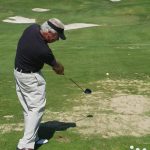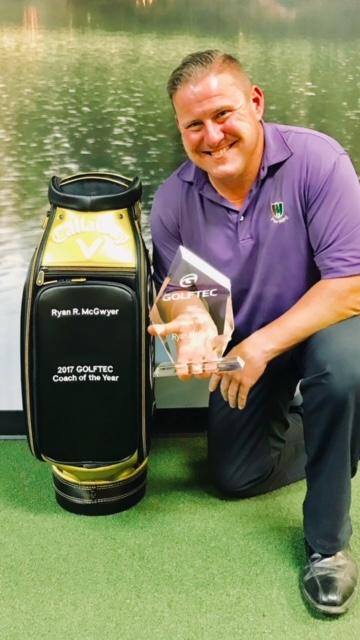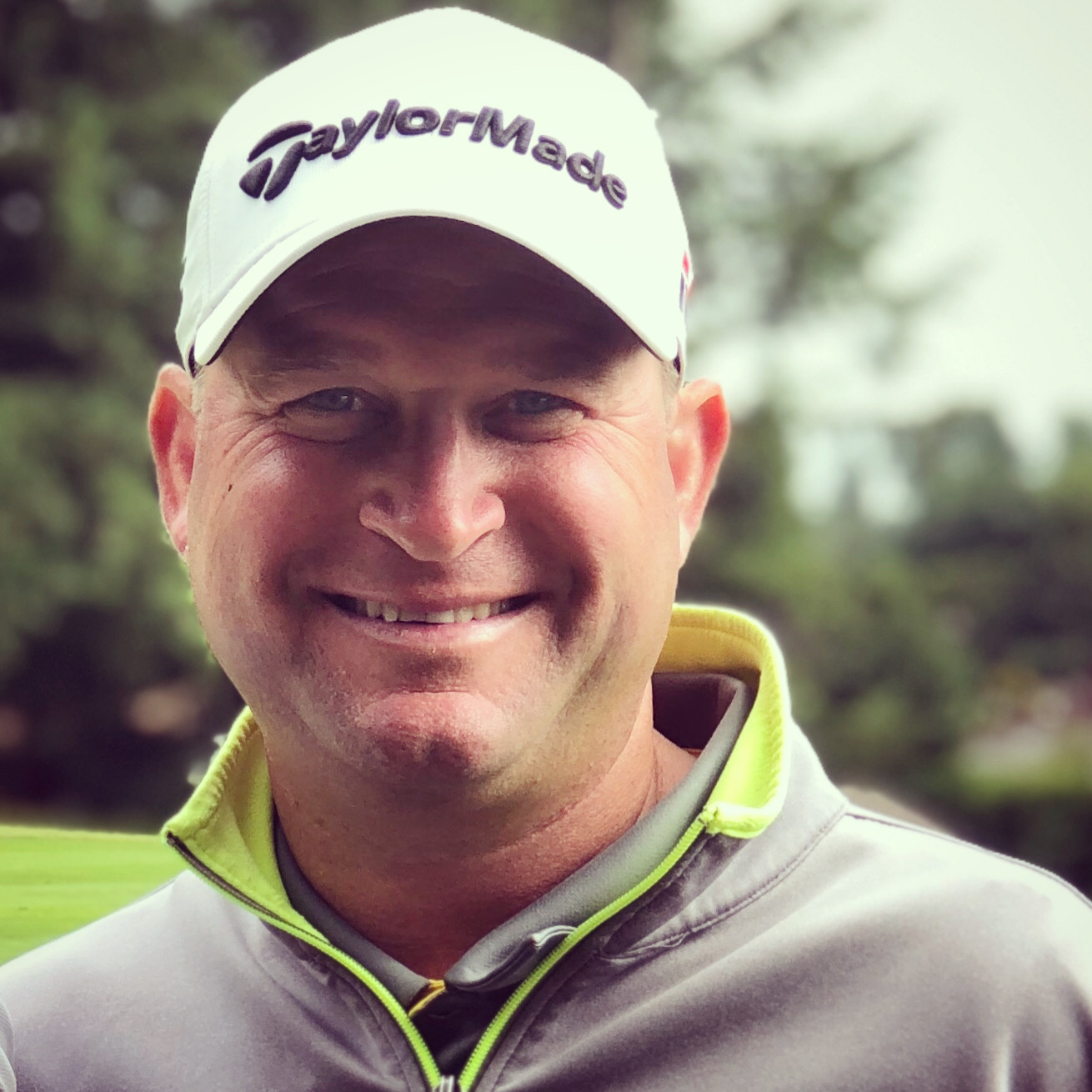Get a grip! What's your philosophy when discussing the golf grip during instruction?
Match Up Your Grip
The grip is a very important part of the golf and instruction. The grip is your connection to the club and is important for controlling the club face. Grip changes should be made when 1- you can’t hinge or rotate the club due to your grip 2- your grip doesn’t match how your release 3 – injury maybe caused due to the grip.
How the hands are placed on the golf club will influence everything that comes after
I place the highest emphasis on the grip when working with almost any student. If the player is advanced, I probably would not change the grip. However, with everyone else I most likely would. How the hands are placed on a golf club will influence everything that comes after. For this reason, I believe that the first lesson is the most important lesson in any persons golfing life.
For example – if a player has a strong closed face grip, they most likely will set up with the hands very forward and aiming to the right. I prefer a simple, square set up and aim position so I can keep the swing technique simple as well. If a grip is open faced, then the player will most likely flip their hands at impact to keep the ball from going right. If it is closed face, then the player will most likely hold on and not release to prevent the ball from going left. For these reasons I teach a hand position somewhere between neutral and strong neutral.
As for the style of grip, I start my younger players and women with the 10 finger or baseball grip. This seems to help them control the club a bit more and thus have more connection to the club face. After that, I try and work with the student to develop a grip style that feels comfortable for them, which could very well stay as the baseball grip if they are successfully improving.
Really want to improve your golf game? Get incredible swing tips delivered to your inbox every week.
Good Golf Begins with a Good Grip
Grip / Hold
“Hold the club, don’t death grip it!”
Thomas T Wartelle, WGTF & PGA Pro
@ttwgolf
There is no one standard grip for everyone, only one perfect grip for each individual. Each person’s body is different. Therefore their anatomy dictates each person’s natural wrist and hand position. Once this is found, then we can find the lead hand’s natural position on the club.
A good grip starts with the target hand position. Have the student stand naturally with his arms to the side as if he were just speaking to someone. From this position, the arms are hanging comfortably on the sides. The palms of the hand should basically face each other with the thumbs side slightly turned inward. That being said, everybody’s anatomy is different. Some individual’s hands will turn more in or more out than the “average” position.
Note the position of the hands and if the wrists turn more in or more out. The target hand should grip the club from its natural anatomical position.
The club should lie across the target hand so that it runs diagonally from the heel pad to the first joint of the index finger. The thumb runs nearly on top and down toward the clubhead with just the pad of the thumb touching the shaft. This is commonly known as the short thumb position and will ease the connection of the trailing hand with the target hand.
The trailing hand should be placed with the club resting across the top joints of the fingers just below the palm. The grip is predominately in the fingers. When the hand is closed onto the club, the thumb pad covers / hides the thumb of the lead hand. The hands should be parallel to each other with the trailing hand’s position dictated by the leading hand’s position.
After the natural hand position is found, the v’s formed by the thumb and forefinger of each hand can be used as a reference. This can vary slightly among people because of different anatomy and hand types.
A good starting point when using the “v” as a reference point is the “v” on the lead hand should point at the non-target side ear and the “v” on the trailing hand should point up the trailing forearm.
It should be noted that this grip position is often considered slightly “stronger”. This is actually ideal because during impact, the hands are ahead of the ball. Therefore, this position puts the clubface in a square position.
A “neutral” or even “weaker” grip where the “v’s” are pointed more toward the chin would put the clubface in an open position at impact. Often this weaker grip is taught by instructors and leads to difficulty in squaring the clubface at impact.
Most good players tend to be in this “stronger” position. From this position, the hands can be more passive and the body rotation will square the clubface at impact. This is an advantage as the hands are less active in the swing.
Remember that each individual’s grip can be slightly different because we all do not have the same hands! We are looking for unity and ability to square the clubface at impact repeatedly.
Grip pressure should be light enough to encourage clubhead speed without losing directional control. The hold forms the basis of the golf swing, as the hands are the only contact with the golf club. The hands control the angle of the clubface throughout the swing and the ball simply reacts to the clubface.
The basic concept of the hold is to play a backhanded shot with the lead hand and a forehanded shot with the trailing hand. A fundamentally correct grip allows the hands to work as a unit on the club.
The two hands can be connected using several variations. The most important thing is that the golfer is comfortable with the connection and can consistently place his hands the same way. There are also many variations to these types of grips.
Three common variations of connections between the hands are:
Ten Finger Grip: Used by: Bob Rosburg
Overlap Grip: Used by: Most Pros, Harry Vardon, Ernie Els
Interlock: Used by: Jack Nicklaus, Greg Norman, Tiger Woods, Rory McIlroy
Remember what Ben Hogan said, “Golf begins with a good grip.”
Grip Keys
The reality is that how a player holds a golf club is critical to his or her ability to influence it. In order to apply forces to swing the club and control the club face, a player must have a functional grip. A poor grip is a (perhaps THE) leading cause of amateur struggles.
The key word, however, is FUNCTIONAL. There are many different types of grips, lots of preferences, and popular styles that vary amongst instructors. But functionality is paramount. To keep it simple, a “functional” golf grip means being able to physically hold onto the club under speed (no slippage or twisting), creating leverage (to develop speed), and controlling the club face throughout the swinging motion (especially at impact).
I work with students on grip when it needs to be altered for the player to meet one of the above requirements. But I also make sure to only work on the golf grip once a player has built trust with me is is committed to improving. A grip change is a big deal and can take several weeks to truly get down. And much like learning to hold a musical instrument, you must get the details correct. But the payoff is almost always worth it.
A good grip doesn’t guarantee a successful golf swing, but you’ll rarely see a good player with a bad grip.
Grip - Keep it Simple
At the risk of sounding overly simplified – the grip is one of the most important fundamentals any golfer should learn. So important that Arnold Palmer’s father put his hands on the club and told him not to move them. Jack Nicklaus would return to his teaching professional every year for a fundamental tune-up. It’s that important!
I am not going to try and describe the grip to you; you need a PGA Professional to show you in person how to put your hands on the club properly. However I will say this: the grip is your only connection to the club and therefore, the primary factor influencing whether or not the club face will be square at impact. At first, the proper grip may not “feel” comfortable – but the ball does not care. If you get the grip right, the clubface has the best chance to get square at impact.
Get a Grip!
When playing your best golf, you are no doubt completely relaxed and enjoying yourself, right?!When you start to play poorly, however, it is typically a result of tension in your body, specifically from tight grip pressure. My advice is to keep your grip pressure soft! Try this: during your pre-shot routine, take a deep breath and relax. Then, address the golf ball with soft hands on the club. Waggle the club at address. Then, as you swing, keep your grip pressure light and keep it constantly light, throughout the length of your swing. Do not let your hands tighten up! (A common sign of distress). Remember to “swing with effortless power.” Your tempo is key. Soft hands makes for a great tempo! Enjoy!
The Golf Grip Is No Philosophy!
The golf grip is no philosophy. Any qualified and trained instructor should know these facts with regards to the golf grip. First, the grip has the most influential effect on club face angle at impact, which determines how the ball curves or does not curve in the air. However, there is a correct way to hold the club and incorrect ways. If your grip is too weak with the top hand not showing at least two knuckles when you look down at it, the ball has more of a tendency to slice. To see just the first two knuckles of your top hand promotes a more neutral (proper) grip. Likewise, if the top hand is too strong (showing more than two knuckles), the ball is more likely to hook. Also, with regards to holding the club, it should be held in your fingers always, but never in the palm of your hand. Holding the club in the palm of your hand usually does not allow the club face to rotate through impact (leaving the club face open), which causes the ball to slice!
A good grip is the key to good golf!
Grip position and pressure.
Proper grip position and grip pressure are two of the most important fundamentals in the game. It is very important to understand and establish both for any player who wishes to play the game at a high level and consistently strike the ball well.
In general, the club should be held tight enough to control it, but light enough for the hands to react, set, and release properly. Sam Snead said it best,” hold the club as if you are holding a bird. Hold on enough to control it, but don’t hurt it”.
Ideally, we should be able to see the back of the top hand, (around 2-3 knuckles, or at least the label of your glove on the top hand as you look down, or straight on into a mirror. We are all unique in our timing, and amount of effort, so each individual should explore and adjust the position of the hands and pressure to match their own swing.
My best advice is to have a qualified PGA Professional help you with this area, and not leave it to chance. Developing comfort and confidence in a good grip is huge!!! Establishing a poor grip can be devastating, and the game is challenging enough when everything is perfect! Lastly, a molded training grip is a good idea for new players! Have your PGA Pro put one on an old club correctly and practice with it!
As always, play well and have fun out there.
Hold club lighter
The grip is your only connection to the club so we must get the size right to hold the club with the right grip pressure. When the grip is too small you will hold to tight and slow the club down When the grip is bigger you can hold the club lighter and speed the club up.
PGA Tour Superstore - East Palo Alto, East Palo Alto, CA
Only when necessary
I strongly feel that the grip is extremely over taught. Squaring the club face at impact is the most important factor and that can be accomplished through a lot of different factors other than grip. Most grip changes can be insanely uncomfortable and unless it has to be done I try to avoid at all costs.
Get a grip - depends
With a brand new golfer we discuss the importance of the grip and the face that the hands are the only body parts that touch the golf club. That and the fact that the face is how all shots start, makes it very important to get the hands in a position that promotes a square club face.
When I asses the swing of an experienced player I look at the grip and aim and goals of the player. If the club face is inconsistent we discuss the grip. If the club face is consistent I take a picture of the grip. I tell the player to develop a routine that produces this grip every time.
Simplify Your Grip
Let’s keep this simple, for a right handed player, the back of your left hand to the target, the palm of your right hand to the target, done!! Easiest way to feel this is pick up a yard stick, left hand on first, thumb on top, right hand on, thumb on top. Enjoy hitting the ball toward your target, don’t make this hard!!
Only Connection to the Club Face
I’ve never been one to shy away from changing a players grip–but not right away. I’ve seen way too many “weak” grips in my career and how many folks slice the ball–a LOT. The hands/grip control the club face and if a player senses an open club face due to a weak grip they are going to do everything possible to keep the ball from slicing. Hit from the outside, flip the hands, etc. Get the top hand more over the top of the grip and the bottom hand more under and more times than not they’ll start feeling a more square to shut face, the ball will start drawing and they’ll start swinging more from the inside. A lot of times they will need to have the release explained to them but eventually they’ll get it.
Most important fundamental
Simplest approach to a sound grip is to have the left palm parallel to the angle of the left arm and the right palm parallel to the angle of the right arm and then grip the club with thepalms keeping their position and after gripping be parallel to each other. Should produce a neutral or slightly “strong” grip.
Good Grip, Good Golf...Bad Grip, No Chance!
Good Grip, Good Golf…Bad Grip, No Chance!…Couldn’t be any simpler!!!
The Clubface Mirrors the Grip
The grip is the most important fundamental in golf because it is the only part of the body touching the club. The way a person grips the club and the pressure in which they hold the club go a long way in determining the outcome of a shot. I have never given a first time lesson and not adjusted someone’s grip or posture. Placing the grip in the fingers and less in the palm is the first step to controlling the clubface. Controlling the clubface is the name of the game, and the face of the club mirrors a person’s hand placement around the grip.
It’s the most important fundamental
To illustrate the importance of grip I will generally hold the club in 1 finger (index finger with heel pad on top) I will tell my student to pull it out of my hand. The student will usually look at me funny then pull like crazy and watch in amazement as the club does not come out! I follow that up with “if the club is that secure with 1 finger, why do I need to hold the club tight?” I also use a ruler or alignment rod and have my students grip that and I ask them how does it feel different than how they grip it. They say more in the fingers ?
Know your miss
Every player needs to understand the difference in a strong, neutral, and weak grip and become comfortable with adjusting to his or her needs. If the student is missing right consistently, strengthen the grip by rotating the left hand to the right and/or the right hand to the left. This will help the clubface rotate to a more closed position through impact more naturally. Try the opposite for left misses to stop the clubface from rotating too much through impact.
In the Fingers!
Far too many people grip the golf club in the palms. If you grip the club on the ground like you would at setup, it naturally sits across the palm. Instead, grip the club in the air so your fingers can go “across” the grip rather than down the grip. I tell many students that they’ve got a free training aid – the shaft just above the clubhead – in every club. Grip the skinny end of the shaft and you can’t help but grip it in the fingers.
Samurai Chop Grip
The lead hand on the grip needs to be what I call “built up on top” of the handle with two knuckles showing and in the fingers while the face is square. This gives you leverage to “Chop” the club and have control of the face. The trail hand needs to cover the lead hand thumb within the lifeline. I call it a hot dog in a bun. Overall the grip is the lifeline to the club and will work with the timing of the swing for the club face to be consistently “square” at impact. It is one of the most important fundamentals of a great player.
The grip
Very simple I show my clients a picture from Ben Hogan’s 5 Fundamentals or I have them grip what are FORMED GRIPs, Simple as that!!!!!!!
Target side hand comes first
We all know what a bicycle wheel with bent spokes would look like. Typically, the wheel has 38 spokes as I recall. The golf swing is like a wheel with your center of balance being the axle. But we only have two spokes–right arm, left arm. And as we swing away from the ball, the trail side arm must either bend, or the target side arm has to grow about one foot longer! So, we’re down to ONE straight spoke, the target side arm. Therefore, the target side grip must make that arm’s job as easy as possible. As pictured, being able to do this Ben Hogan drill ensures that we give the target side hand/arm a huge mechanical advantage over the club, making it easier to do the job. Test this yourself by placing the club in your hand as pictured (securing the club with the pointer finger and the pad above the pinky alone), and without wrapping any other fingers around the grip, you can give the club a pretty good rap against a post, tire, or tree and the club will not be dislodged. Obviously, this will allow the player to use a relaxed grip, not too tight, meaning more speed and control.
Grip preference
I tell students that the key to controlling your golf ball is controlling the clubface……..and the only part of the body that touches the club are your hands…….therefore they have the most influence over face position……so if we introduce a proper grip early in their development, they have the best chance of success. A proper grip will then allow for the mechanics of the swing to develop properly.





















